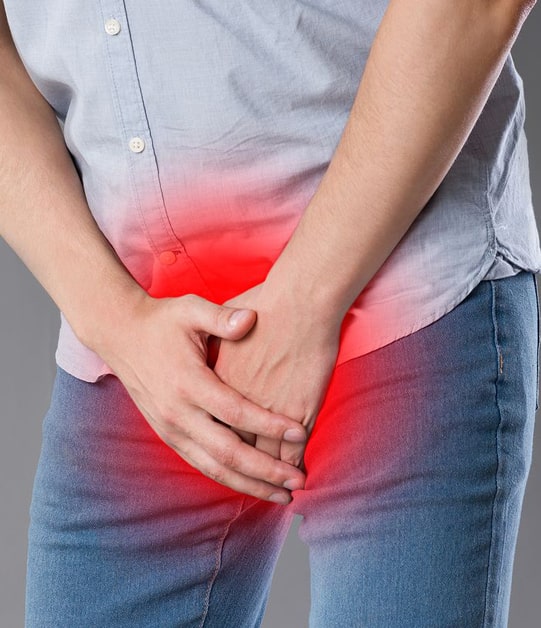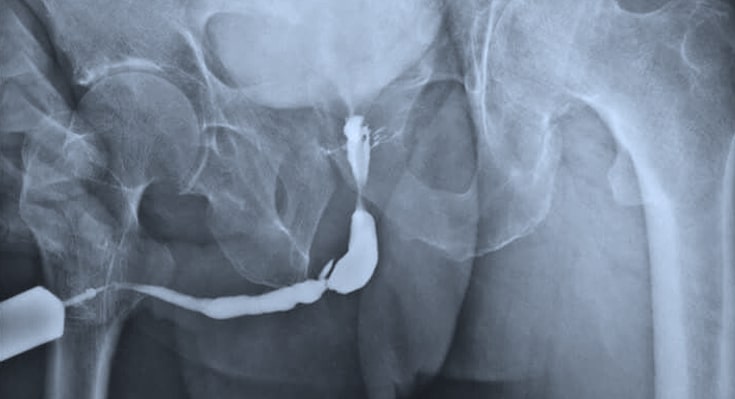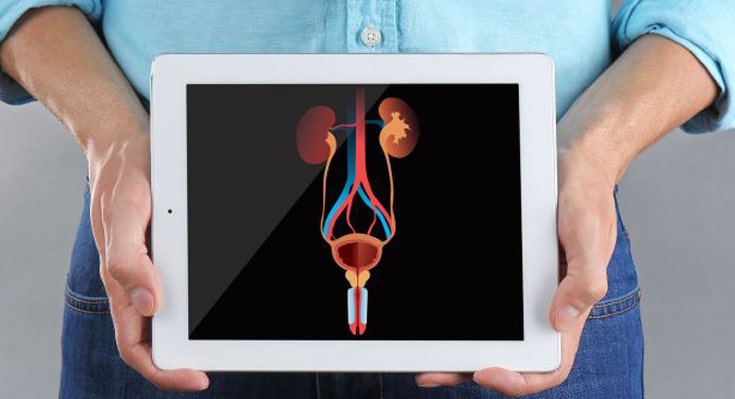Emergency Cases
Salamanca Guanajuato
464 116 2012
San Miguel de Allende
415 111 6819
Please contact in case of emergency or to request a consultation.
Urethral stenosis or stricture is a scar in the urethra itself, which usually blocks the flow of urine. Normally its causes are congenital, inflammatory, infectious or traumatic, although in the highest rate of cases, he cause is unknown.
All strictures arise from damage to the epithelium of the urethra or the underlying corpus spongiosum, ultimately leading to fibrosis ( spongiofibrosis).
Microscopic changes at the tissue level show that the pseudostratified columnar epithelium is replaces by so called squamous metaplasia. With urination, small drops of urine in this squamous metaplasia cause a fibrotic reaction within the corpus spongiosum.
At the beginning of the disease, the fibrosis can be asymptomatic, however, and over time, the fibrosis process can cause a scar in the lumen of the urethra, causing a symptomatic urinary flow obstruction.

When we refer to urethral stenosis, we normally speak of a disease of the anterior urethra. It creates scars that affect the spongy erectile tissue of the corpus spongiosum (Spongiofibrosis).
Usually this happens due to:
-A medical procedure that involves inserting an instrument, such as an endoscope, into the urethra.
-Intermittent or long-term use of catheter inserted through the urethra to drain the bladder.
-Trauma or injury to the urethra or pelvis
-An enlarged prostate or previous surgery to remove or shrink an enlarged prostate gland.
-Cancer of the urethra or prostate
-Sexually transmitted infections
-Radiotherapy
In adult men, urethral stricture is likely to develop as a result of prostate surgery, catheterization, urinary catheterization, or other instrumentation.
Those produced by a saddle injury, or a straddle fall are also frequent. That is why the treatment of stenosis will be determined by the type of urethral obstruction that is shown.
Often, a dilation or endoscopy (internal urethrotomy) is done.
However, in certain types of complicated stenosis, such as very prolonged and recurrent stenosis that continue despite initial treatments, dilation and endoscopy should be avoided; and daily self-catheterization may be indicated.
Open urethroplasty may be indicated if the stenosis is localized and causes recurring problems.
Signs and symptoms of urethral stenosis may include:




Please contact in case of emergency or to request a consultation.